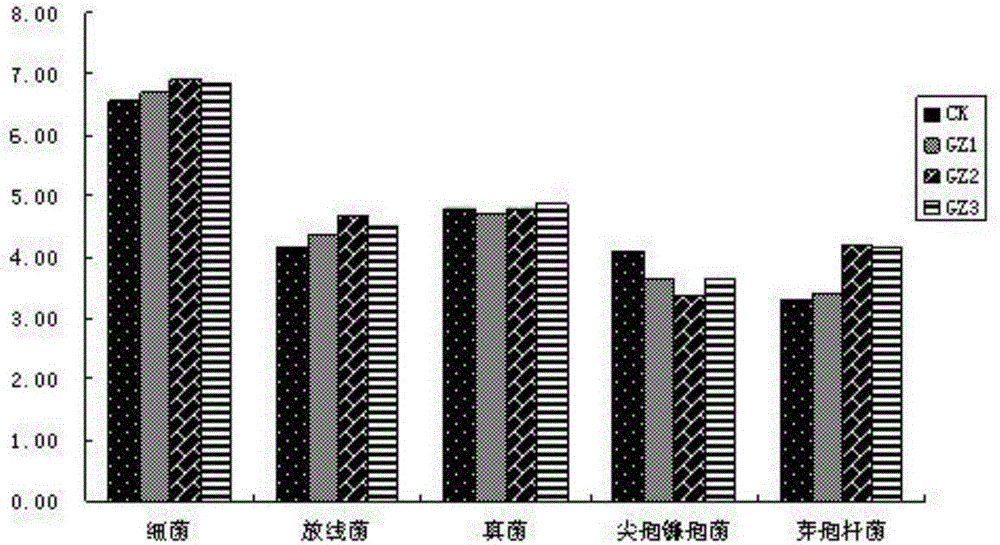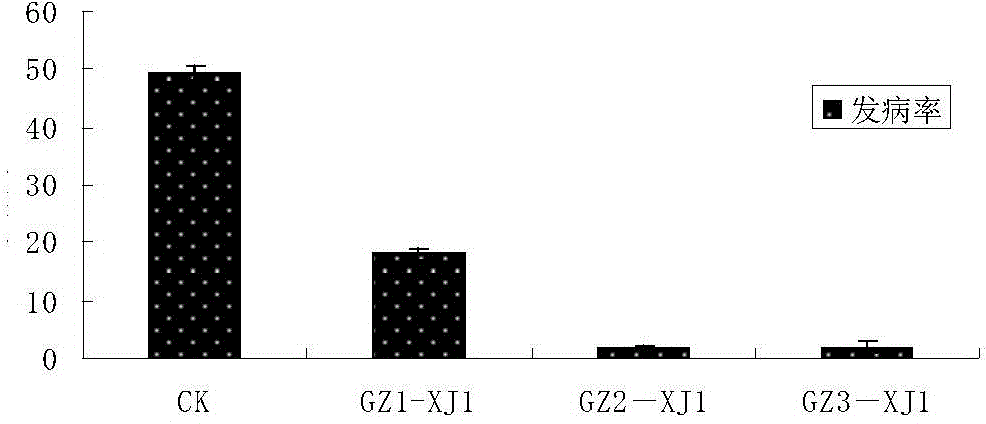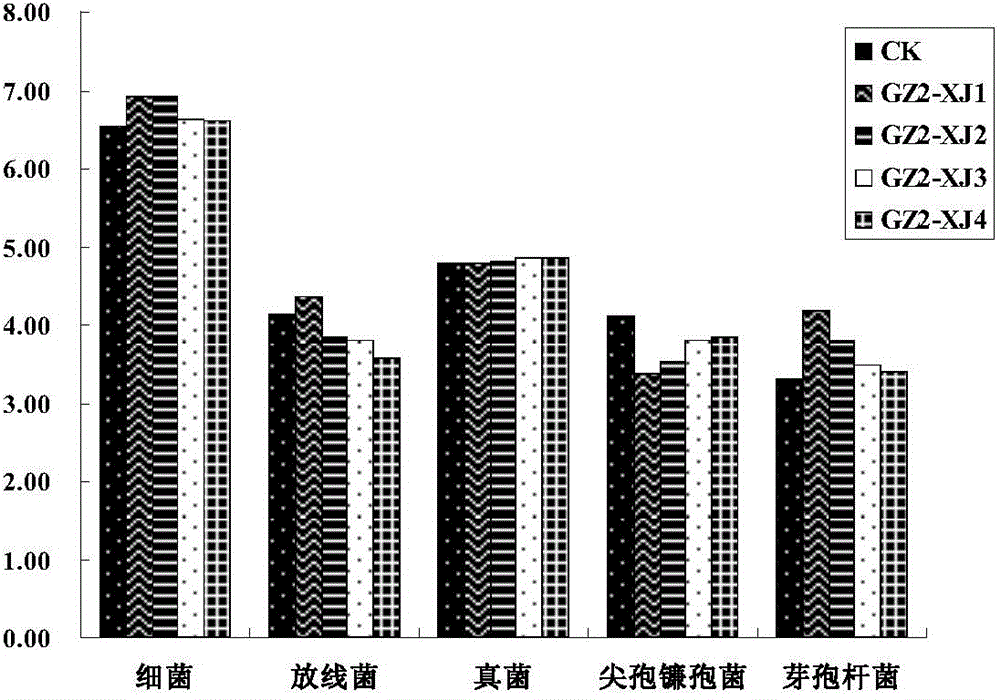Ecological cultivation method of bananas and sugarcanes for overcoming soil continuous cropping obstacles
A technology of soil continuous cropping obstacle and cultivation method is applied in the field of ecological cultivation in which banana-sugarcane rotation overcomes the soil continuous cropping obstacle, and can solve the problems of reducing soil nutrient availability, affecting banana quality and yield, and stunted growth and development of bananas, and reaching the number of pathogenic bacteria. The effect of reducing and avoiding the accumulation of pathogenic microorganisms and harmful chemicals and increasing the yield per mu of land
- Summary
- Abstract
- Description
- Claims
- Application Information
AI Technical Summary
Problems solved by technology
Method used
Image
Examples
Embodiment 1
[0024] 1. Changes in the number of microorganisms after 1 year, 2 years, and 3 years of banana field rotation with sugarcane
[0025] Test location: Zhongwei Village, Shatian Town, Dongguan City; sampling time: October 14, 2013
[0026] The banana planting area experiment is as follows:
[0027] The sample number and description are as follows:
[0028] 1. CK, banana orchard soil that has been continuously growing bananas for 11 years;
[0029] 2. GZ1, the soil after 10 years of continuous cropping of bananas and 1 year of rotation of sugarcane;
[0030] 3. GZ2, the soil after 9 years of continuous cropping of bananas and 2 years of rotation of sugarcane;
[0031] 4. GZ3, the soil after 8 years of continuous cropping of bananas and 3 years of rotation of sugarcane.
[0032] Sampling: 5-point sampling method is used to sample the rhizosphere soil 20-30cm away from the plant, and the depth is about 20cm. After planting bananas or sugarcane for 8 months, the physical and chem...
example 2
[0049] 1. Effects of different ages of sugarcane in banana field rotation on banana growth
[0050] In order to clarify whether the rotation of bananas and sugarcane will affect the growth of the next crop of bananas, the following plot experiments were set up in Zhongwei Village, Shatian Town, Dongguan City:
[0051] The sample number and description are as follows:
[0052] CK, a banana orchard with a high incidence of banana wilt that has been continuously cropping bananas for 11 years;
[0053] GZ1-XJ1, the banana orchard with a high incidence of Fusarium wilt that has been continuously cropping bananas for 9 years, planted Nongke No. 1 bananas after 1 year of rotating sugarcane;
[0054] GZ2-XJ1, the banana orchard with high incidence of banana fusarium wilt that has been continuously cropping bananas for 8 years, planted Nongke No. 1 bananas after 2 years of rotating sugarcane;
[0055] GZ3-XJ1, banana orchards with high incidence of banana fusarium wilt, which have be...
example 3
[0062] Effects of different years of replanting bananas after sugarcane rotation on banana yield and soil microecology
[0063] In order to clarify how many years after the rotation of bananas to sugarcane, how many years to replant bananas can overcome the continuous cropping obstacles, in Zhongwei Village, Shatian Town, Dongguan City, the following plot experiments were set up: CK, Banana Fusarium Wilt, which has been continuously cropped for 11 years High-incidence banana field; GZ2-XJ1, the banana field that has been continuously cropping bananas for 8 years and sugarcane for 2 years, and the banana field that has been planted with Nongke No. 1 banana for 1 year; GZ2-XJ2, the banana field that has been continuously cropping bananas for 7 years. 2 years later, the banana field where Nongke No. 1 banana was replanted 2 years later; GZ2-XJ3, the banana field that has been continuously cropping bananas for 6 years and sugarcane rotation, 2 years later, and the banana field wher...
PUM
 Login to View More
Login to View More Abstract
Description
Claims
Application Information
 Login to View More
Login to View More - R&D
- Intellectual Property
- Life Sciences
- Materials
- Tech Scout
- Unparalleled Data Quality
- Higher Quality Content
- 60% Fewer Hallucinations
Browse by: Latest US Patents, China's latest patents, Technical Efficacy Thesaurus, Application Domain, Technology Topic, Popular Technical Reports.
© 2025 PatSnap. All rights reserved.Legal|Privacy policy|Modern Slavery Act Transparency Statement|Sitemap|About US| Contact US: help@patsnap.com



